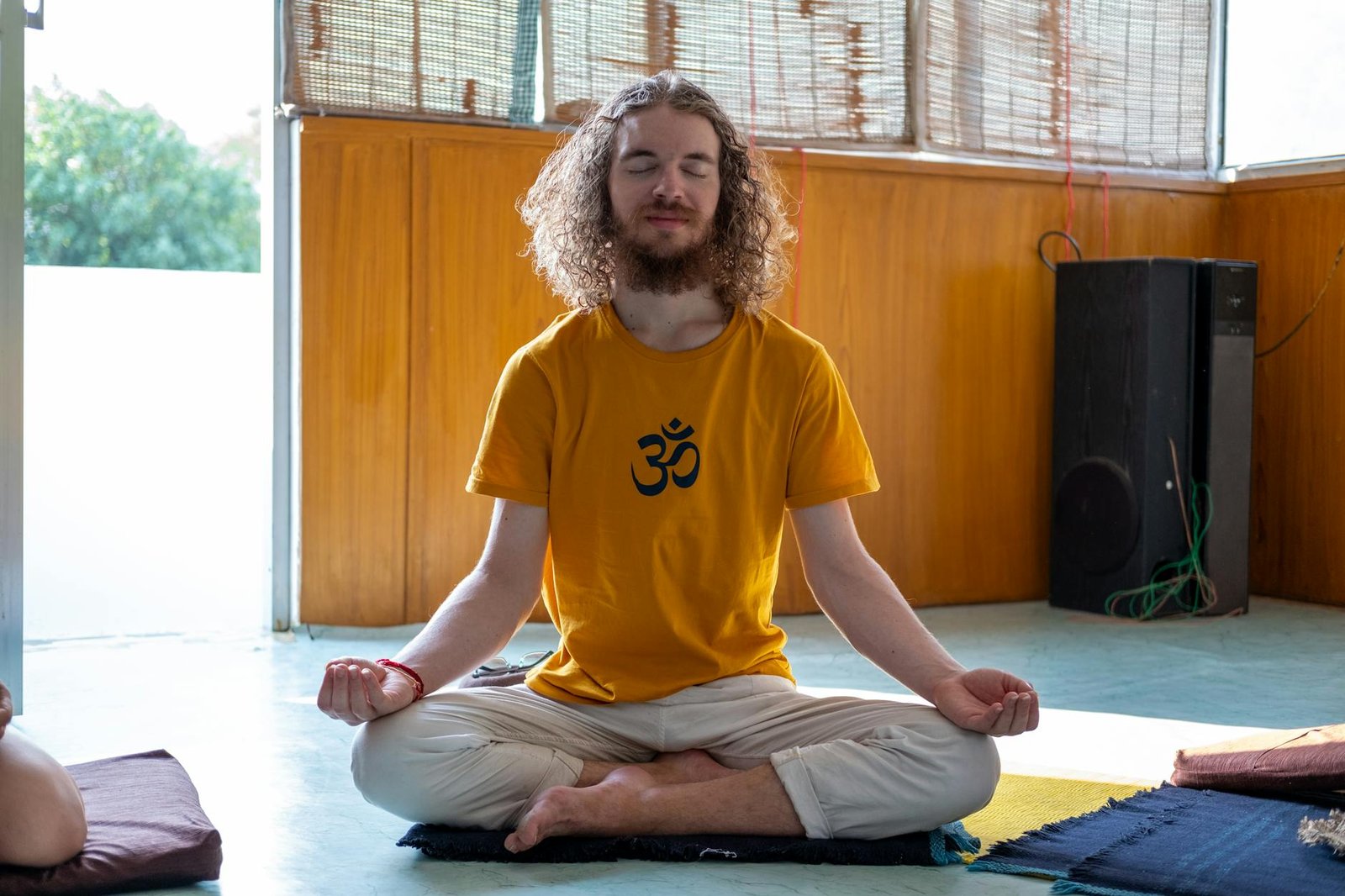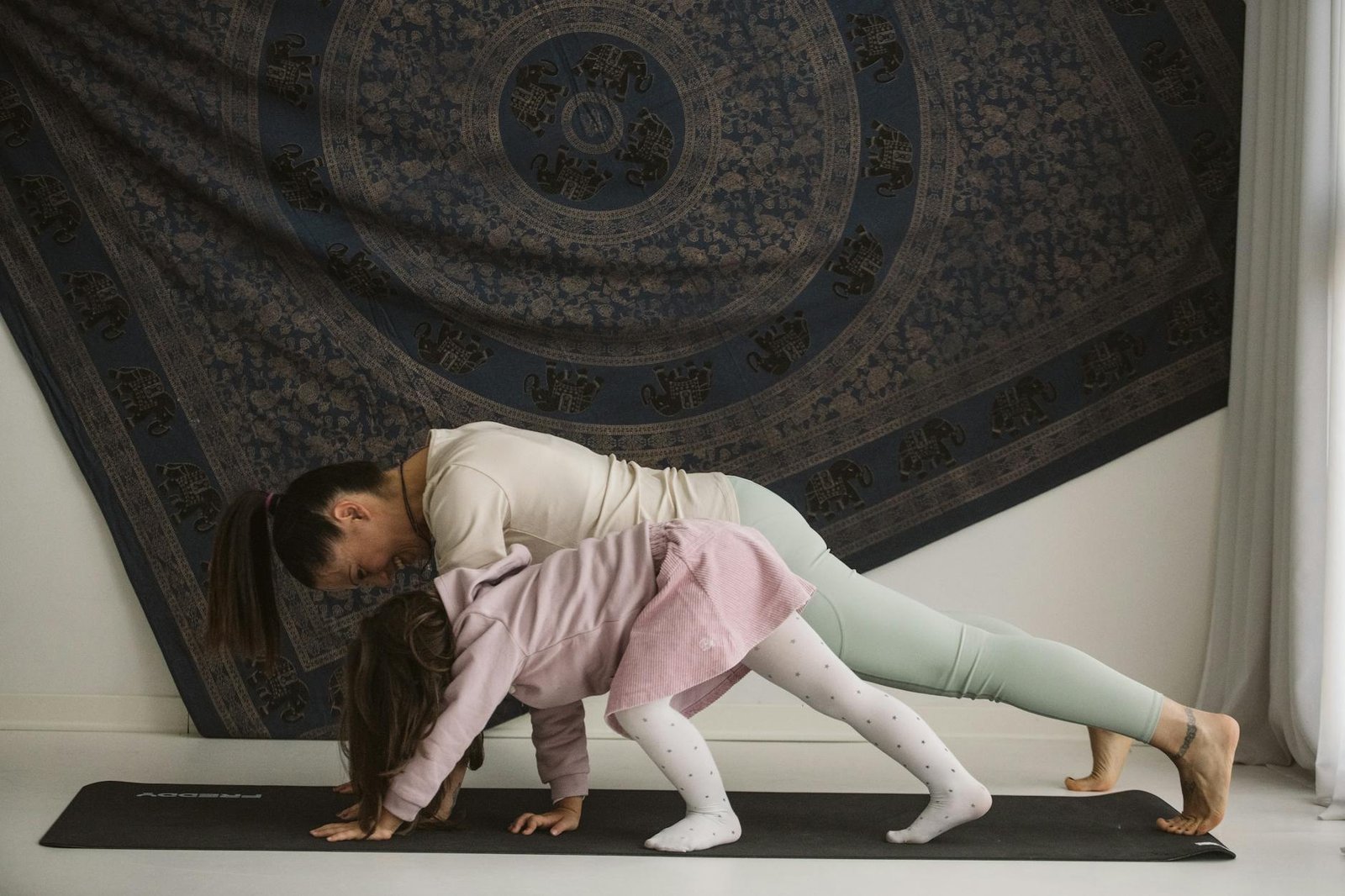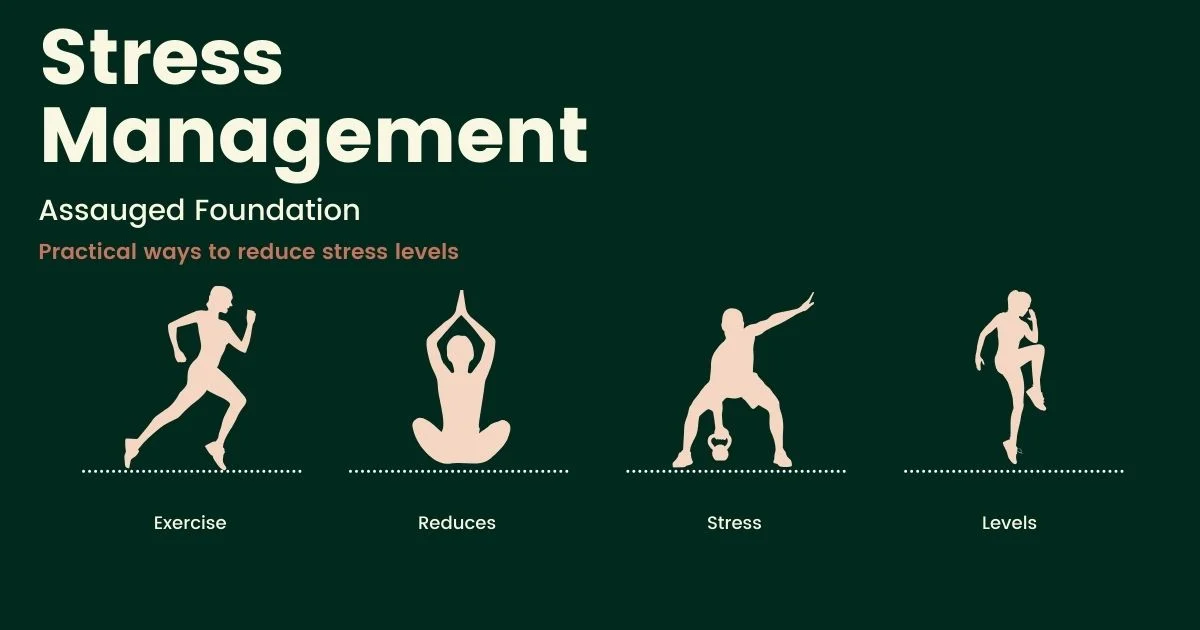
Feeling overwhelmed, anxious, and mentally drained? You’re not alone. In today’s fast-paced world, stress has become our constant companion, silently impacting our physical and mental well-being. But what if the solution to managing stress was simpler than we thought? 🤔
The answer lies in something our bodies are naturally designed for: movement. Exercise isn’t just about building muscles or losing weight – it’s a powerful tool that can transform your entire well-being. From releasing mood-boosting endorphins to creating valuable social connections, physical activity offers a holistic approach to combat stress and enhance your quality of life. 💪
In this guide, we’ll explore how exercise can be your ally in the battle against stress, examining its profound impact on your body, mind, and social life. Let’s discover how you can turn your daily stressors into stepping stones toward a stronger, healthier you.

Understanding Stress and Its Impact
Physical Symptoms of Chronic Stress
- Muscle tension and headaches
- Digestive issues and upset stomach
- Elevated blood pressure
- Sleep disturbances
- Weakened immune system
- Fatigue and low energy
Mental Health Consequences
- Anxiety and depression symptoms
- Memory and concentration issues
- Mood swings
- Irritability and emotional instability
- Decreased motivation
- Racing thoughts
How Stress Affects Daily Performance
| Area | Impact |
|---|---|
| Work | Reduced productivity, missed deadlines |
| Relationships | Communication problems, isolation |
| Self-care | Neglected health routines, poor diet |
| Sleep | Insomnia, irregular sleep patterns |
The Stress-Disease Connection
Chronic stress triggers a cascade of physiological responses that can lead to serious health conditions. The constant release of stress hormones like cortisol can increase inflammation throughout the body, potentially leading to:
- Cardiovascular diseases
- Autoimmune disorders
- Diabetes
- Gastrointestinal problems
- Accelerated aging
Research shows that prolonged exposure to stress can alter gene expression and cellular function, making individuals more susceptible to chronic diseases. The body’s stress response system, while designed for short-term survival, can become destructive when constantly activated.
Now that we understand how stress impacts our body and mind, let’s explore how exercise can serve as a powerful antidote to these effects.

Exercise as a Natural Stress Reliever
Release of Endorphins and Feel-Good Hormones
Exercise triggers the release of your body’s natural mood elevators, primarily endorphins and serotonin. During physical activity, these chemicals flood your system, creating what’s commonly known as a “runner’s high.” This natural response:
- Elevates mood instantly
- Reduces anxiety
- Increases feelings of happiness
- Promotes emotional well-being
Reduced Cortisol Levels
Physical activity helps regulate stress hormones, particularly cortisol. Here’s how exercise impacts cortisol levels:
| Time Period | Cortisol Effect |
|---|---|
| During Exercise | Temporary increase |
| Post-Exercise | Significant decrease |
| Long-term | Better regulation |
Better Sleep Quality
Regular exercise significantly improves sleep patterns, creating a positive cycle for stress management. Key benefits include:
- Decreased time to fall asleep
- Improved deep sleep duration
- Reduced nighttime awakenings
- Enhanced sleep consistency
Even simple home workouts and bodyweight exercises can achieve these benefits. A 20-minute full-body workout at home can be sufficient to trigger these stress-relieving responses. The key is consistency rather than intensity, making home fitness an accessible solution for stress management.
Now that we understand how exercise naturally combats stress, let’s explore the remarkable physical transformations your body undergoes through regular physical activity.

Physical Transformations Through Exercise
Enhanced Cardiovascular Health
Regular exercise strengthens your heart muscle, improves blood circulation, and lowers blood pressure. A consistent workout routine can reduce your resting heart rate and increase your cardiovascular endurance, making daily activities easier to perform.
Improved Muscle Strength and Flexibility
Bodyweight exercises and resistance training lead to significant improvements in:
- Muscle mass and definition
- Joint mobility
- Overall body strength
- Recovery capabilities
Better Posture and Body Alignment
Home workouts focusing on core strength contribute to:
| Area | Benefits |
|---|---|
| Spine | Reduced back pain |
| Shoulders | Less tension and improved alignment |
| Core | Enhanced stability and balance |
| Neck | Decreased strain |
Weight Management Benefits
Full-body workouts at home are effective for:
- Increasing metabolism
- Building lean muscle mass
- Burning calories efficiently
- Maintaining healthy body composition
Increased Energy Levels
Regular exercise enhances your energy through:
- Improved oxygen circulation
- Enhanced mitochondrial function
- Better sleep quality
- Increased endurance
These physical transformations work together to create a stronger, more resilient body. With consistent home fitness routines, you’ll notice improvements in your daily activities and overall vitality. Now, let’s explore how these physical changes contribute to significant mental health benefits.

Mental Benefits of Regular Exercise
Improved Focus and Concentration
Regular exercise significantly enhances cognitive function through increased blood flow to the brain. Studies show that just 30 minutes of moderate exercise can improve:
- Task accuracy by 12%
- Information processing speed
- Mental alertness
- Memory retention
Enhanced Self-esteem
Physical activity creates a powerful positive feedback loop for self-image and confidence:
| Benefit | Impact |
|---|---|
| Goal Achievement | Builds sense of accomplishment |
| Physical Progress | Improves body image |
| Skill Mastery | Increases self-efficacy |
| Endorphin Release | Elevates mood naturally |
Better Emotional Regulation
Exercise provides natural tools for managing emotions and stress responses. Regular physical activity helps:
- Reduce anxiety symptoms by up to 48%
- Lower depression risk by 26%
- Stabilize mood fluctuations
- Improve sleep quality, which supports emotional balance
A consistent exercise routine creates measurable changes in brain chemistry, including increased production of serotonin and dopamine. These neurotransmitters play crucial roles in emotional stability and mental well-being. The mental clarity gained through regular physical activity also enables better decision-making and stress management in daily life.
With these mental benefits established, let’s explore how to build a sustainable exercise routine that works for your lifestyle and goals.

Building a Sustainable Exercise Routine
Finding Activities You Enjoy
The key to maintaining a long-term exercise routine lies in selecting activities that bring you joy. Consider these home-based options that require minimal or no equipment:
- Bodyweight exercises (pushups, squats, lunges)
- Dance workouts
- Yoga or Pilates
- High-intensity interval training (HIIT)
- Online fitness classes
Setting Realistic Goals
Create SMART goals that align with your lifestyle:
| Goal Component | Example |
|---|---|
| Specific | Complete 20 pushups without breaks |
| Measurable | Track reps and sets |
| Achievable | Start with 5 pushups, increase gradually |
| Relevant | Improves upper body strength |
| Time-bound | Achieve within 8 weeks |
Tracking Progress
Monitor your fitness journey using:
- Fitness apps or journals
- Progress photos
- Performance metrics
- Workout calendars
Creating Accountability
Stay committed through:
- Virtual workout buddies
- Online fitness communities
- Social media challenges
- Weekly check-ins with friends
Remember to start gradually with home workouts, focusing on proper form before increasing intensity. A sustainable routine typically includes 3-4 sessions per week, allowing for adequate rest and recovery. Mix different types of exercises to prevent boredom and ensure full-body conditioning.
Now that you have the foundation for building a sustainable exercise routine, let’s explore how regular physical activity can enhance your social connections and build meaningful relationships.

Exercise’s Social Impact
Building Community Through Group Activities
Group exercise activities create natural opportunities for social connections and community building. Whether it’s joining a running club, participating in group fitness classes, or being part of a sports team, these activities foster meaningful relationships through shared goals and experiences.
| Activity Type | Social Benefits | Community Impact |
|---|---|---|
| Group Classes | Instant connections, shared motivation | Creates regular meetup opportunities |
| Team Sports | Enhanced communication skills, trust-building | Develops neighborhood networks |
| Running Clubs | Goal-oriented partnerships, accountability | Builds local fitness communities |
Strengthening Relationships
Physical activities provide unique opportunities to bond with family, friends, and colleagues. Regular exercise partners often develop deeper connections through:
- Shared achievements and milestone celebrations
- Regular quality time during workouts
- Mutual support and encouragement
- Common health and wellness goals
Developing Support Networks
Exercise communities serve as powerful support systems that extend beyond fitness:
- Accountability partners help maintain consistency
- Experienced members mentor newcomers
- Social media groups share tips and celebrate progress
- Group challenges create collective motivation
These fitness-focused relationships often evolve into broader support networks, providing emotional and social benefits that complement physical wellness. Members not only share workout advice but also create lasting friendships that enhance overall life satisfaction. Now that we understand the social dimension of exercise, let’s explore how to build a sustainable routine that incorporates these community aspects.

Regular exercise stands as a powerful catalyst for both physical and mental transformation. By incorporating consistent physical activity into our daily lives, we can effectively manage stress, boost our mood through natural endorphins, and achieve tangible improvements in our overall health and fitness levels.
The journey from stress to strength begins with a single step – whether it’s a morning walk, a gym session, or a yoga class. By building a sustainable exercise routine and potentially connecting with others who share similar fitness goals, you can create lasting positive changes in your life. Take that first step today and experience how exercise can reshape not just your body, but your entire well-being.




